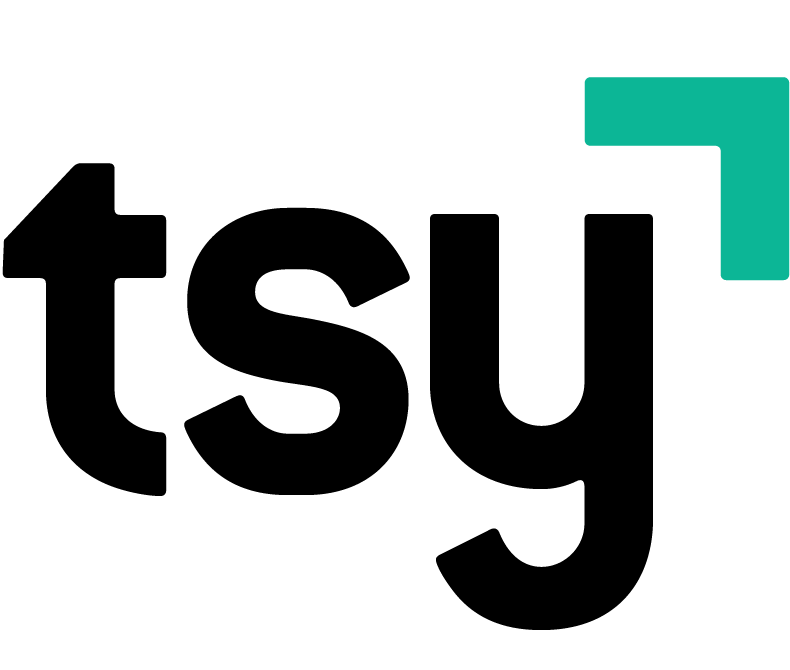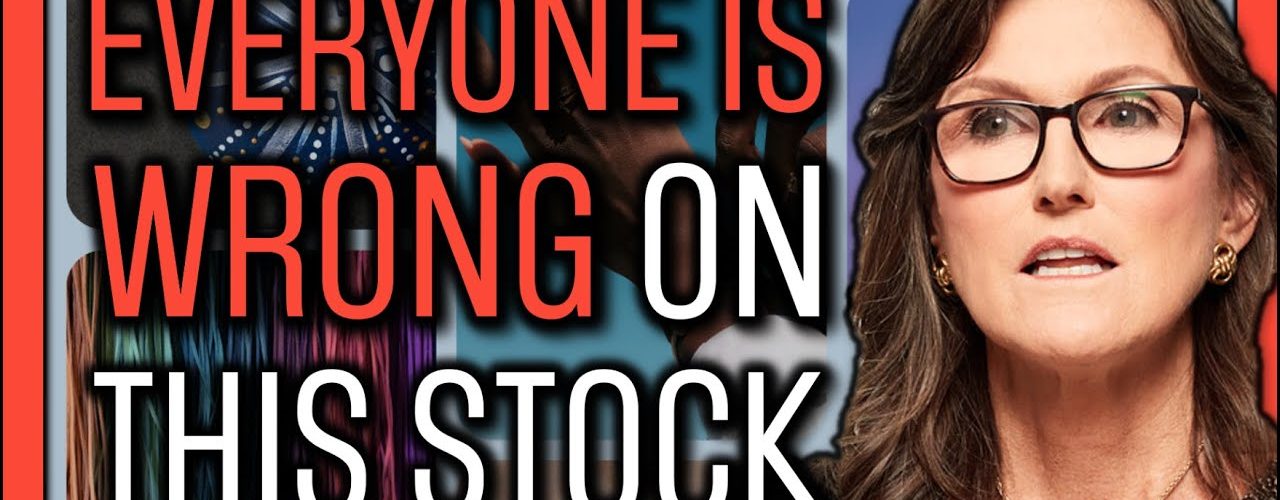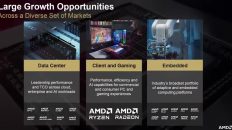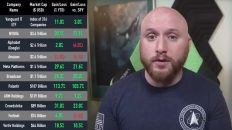Mentioned in Video:
- Pinterest Predicts 2021: https://business.pinterest.com/en-gb/pinterest-predicts/
- Pinterest Lens: https://about.pinterest.com/en/lens
- Pinterest Earnings Call and Shareholder Letter: https://investor.pinterestinc.com/investor-overview/default.aspx
- Is Microsoft Buying The Next Great Entertainment Company In TikTok? (Nicholas Grous, ARK Invest): https://ark-invest.com/articles/analyst-research/is-microsoft-buying-the-next-great-entertainment-company-in-tiktok/
- ARK Invest's Newsletter Issue 246 (Comparing PINS to FB Stock): https://ark-invest.com/newsletters/issue-246/
- Support the channel and get extra member-only benefits by joining us on Patreon: https://www.patreon.com/tickersymbolyou
📌 #ARKInvest is very often right on the future, but when it comes to this stock, I think #CathieWood and her research team are really missing the bigger picture. I'm talking about #Pinterest stock. Why is TWTR stock in #ARKK and #ARKW while #PINS stock is only in #ARKF? In this episode, I compare PINS to more traditional #SocialMedia platforms and their stocks, like $FB (Facebook stock), $SNAP (Snapchat stock), show you what the market is missing, and decide whether PINS is one of the best stocks to buy now.
Video Transcript:
[00:00:00.670]
Okay, this is one of those rare moments where I disagree with ARK Invest. I want to talk about this company now because they recently reported some awesome earnings and like all great earnings calls, their stock immediately dropped by 20%. Gotta love the stock market. In this episode, I'd like to explain why I'm incredibly bullish on the short, medium and long term future of Pinterest, ticker symbol PINS. And if you think that it's just a second rate social media platform, boy, is this episode for you. Full disclosure,
[00:00:30.070]
I own Pinterest through my position in ARKF and recently started a separate position in Pinterest based on this research. So let's dive right into it, starting with ARK Invest. If you go to ark-invest.com, which is where they share all of their research and you click on articles, you can filter their research down by company. If you type in “pins”, you get a single article from late last year about Microsoft potentially buying TikTok.
[00:00:53.890]
If you search for Pinterest in this article, it's only mentioned once in the following sentence: “compared to more traditional social media platforms like Instagram, Snapchat and Pinterest, TikTok's competitive advantage appears clear: artificial intelligence.” If you go to ARK Invest's newsletters section and search for Pinterest there, it appears in only one issue as well. In issue number 246, it's listed among other social media platforms again like Facebook and Snapchat in a conversation about the emerging trend of social commerce. Now that almost every online business can accept payments, access low cost ecommerce infrastructure, and build a presence on social media. Let's think about Twitter.
[00:01:33.730]
As Cathie Wood often points out, real information and insights get exchanged on Twitter. People share academic papers and breaking news there. When's the last time somebody mentioned Elon Musk's Facebook status? There's also a lot of nontraditional social media interactions happening on Twitter, selling tickets to Twitter Spaces, tipping creators for their content, and so on. If we look at ARK Invest's overall positions, we can see how their research impacts their investment decisions. By the way, this is one of the reasons I follow ARK Invest so closely.
[00:02:03.610]
You can read their research and see exactly how they're putting their money where their mouths are, every single trading day. I really respect that about them. Here is a bar chart of all of ARK Invest's combined holdings. Each bar is one stock and the colors represent how much money is in that stock in each of ARK Invest's funds. So Twitter is the third biggest position in ARKW, their fund themed around the next generation of Internet applications and the 16th biggest position in ARKK, their flagship innovation fund.
[00:02:31.570]
Altogether, ARK Invest has almost $900 million in Twitter, making it their 17th biggest position overall. That's a pretty big position in Twitter, reflecting Cathie Wood's view that there's more to Twitter than just a traditional social media platform. Now, let's look at Pinterest. Pinterest is the 11th biggest position in ARKF, with $100 million in it. It's right above Facebook, which is the 12th biggest position in ARKF with about the same amount of money.
[00:02:58.150]
Overall, Pinterest is Ark Invest's 74th biggest position, sandwiched neatly between Snapchat and Facebook, clearly reflecting ARK Invest's opinion that Pinterest is a more traditional social media platform. Here's why I disagree. All of my sources can be found in the description below. Think about how you use traditional social media. You log in, scroll down through your feed, and add reactions and comments to a few things here and there.
[00:03:22.330]
Maybe you update your status, throw a few photos up there from a recent trip and tag a few buddies. The traditional social media experience has two common elements. First, it's not very focused. There's no real aim to your activity. You just scroll down, see what catches your interests, and maybe join a conversation or two around something on your feed.
[00:03:40.750]
Second, it's focused on your past. I don't mean that in a bad way. I mean, the focus of Facebook is on updating your status and sharing pictures on what has happened and browsing your friends list to see what has happened to them. The reason for this is obvious. The more of your information that Facebook gets from you and your actions and your friends, the more accurately it can match you to advertisers. That's Facebook's core business when it comes to social media.
[00:04:04.930]
Here's what Evan Sharp, the cofounder and chief design officer of Pinterest, has to say about their platform. Quote: “I would say emphatically that Pinterest is not a social network. You don't come to Pinterest to share. Pinterest is not about expressing yourself to others, and it's not about sharing with friends. Pinterest is much more like a search engine than it is a social network, and people who come to Pinterest thinking it's like Facebook or Instagram don't have a great experience because when they upload a photo, they're expecting to get feedback.
[00:04:32.590]
But that's not what Pinterest is for.” Pinterest isn't about what has happened. It's about what is yet to happen. Pinterest is about purposeful discovery of visual inspiration. I'm very careful in choosing those words, so let me explain them.
[00:04:46.210]
When you go to Pinterest, you're specifically browsing for ideas. Maybe it's a recipe or an outfit or ideas for a room layout or a destination to travel for, but you're actively searching for inspiration to take action on something specific. Instead of an outfit, maybe it's a style. Instead of a recipe, maybe it's dinner party ideas. The starting search can be as focused or as fuzzy as you want. As you find things you like,
[00:05:08.650]
you pin them to a board and then Pinterest goes and shows you more content that it thinks could also go on that board, not just images, but videos, and soon live streams as well. Think about how different a board full of connected ideas is from the type of things that you save on Facebook or Instagram or Snapchat. Likewise, think about how much more targeted the ads on Pinterest can be, since users on the platform are, by definition, actively looking for something. If you're inspired by a certain idea that you were searching for, you're much more likely to buy it.
[00:05:39.250]
In fact, according to Sprout Social's 2020 statistics on Pinterest, nearly nine in ten users are on Pinterest to plan purchases and find inspiration for what could fit well in their homes, offices or make great gifts for friends and family.
[00:05:52.570]
And a whopping 85% of users have made a purchase based on seeing a branded Pin. 97% of searches on Pinterest are not brand related, meaning those purchases are coming from users discovering a brand solution to their search on Pinterest, as opposed to already knowing about it beforehand. That means an individual creator or a small business has an equal chance of being discovered as a big one. Ask yourself as an investor, if that's what people are doing when they go on Facebook or Instagram or Snapchat. As of 2019, which is the latest update I could find for how many pins and boards there were,
[00:06:25.510]
There were 240 billion pins saved across 4 billion boards by 400 million users.
[00:06:31.150]
That means that each user on average has ten boards with about 60 pins per board. Anecdotally, I currently have about 15 boards with 377 pins total. I'm not on Pinterest every day, but when I am, I end up falling down the rabbit hole for hours and hours. This ends up giving Pinterest a ton of data, and as a result, my home feed is pretty personalized. Tacos, Cyberpunk art, industrial furniture, and of course, more tacos.
[00:06:56.470]
Unlike Google, you have to log in to use Pinterest, so it's always tying these actions back to a specific profile. That's important, but this is really just the tip of the iceberg. Let me show you the more advanced features of Pinterest that really separate it from the pack on a technical level in my opinion. If I search for home decor and click an image, Pinterest automatically recognizes that that image has multiple subjects in it. Maybe I really like a specific coffee table so I can narrow down my search based on an object in the image
[00:07:23.650]
even if I don't know the name of the brand or even what I'm looking for in advance, I can keep clicking around the image on the left and see different versions of the related elements on the right. This is what I mean by purposeful discovery of visual inspiration. This feature is called Visual Search, and this type of object recognition is obviously done through computer vision algorithms, meaning Pinterest has a lot of advanced artificial intelligence under the hood- 85% of Pinterest users search via mobile devices, like phones and tablets.
[00:07:52.150]
Guess what those devices also have? Cameras. Cameras take pictures. See, this channel is full of deep insights. But seriously, Pinterest knows this too, because they have a capability called Lens where you use your phone's camera through the Pinterest app, and it treats it like any other photo on Pinterest, giving you ideas and inspiration around whatever is in the photo.
[00:08:11.530]
For example, if you Lens an avocado, Pinterest will show you recipes, beauty ideas, and gardening tips because those are all things that include or are inspired by avocados. The idea here is to funnel you deeper into whatever you're actively trying to discover, to ultimately get you to do something actionable. This is pretty different than what happens if you Google the word avocado. You can also show pictures to lens that contain things you don't know the name of. If you go to the bar with a buddy and snap a picture together, you can have Pinterest search for your Buddy's jacket without having to ask him yourself. But no, go ahead.
[00:08:44.230]
Ask your buddy what he's wearing. Hey, pal, what are you wearing? What about the exact opposite application? How would you look in a product that you haven't yet purchased? Earlier this year, Pinterest introduced AR Try On for eyeshadow and more ways to shop products in Pins. With Eyeshadow Try On, which is powered by Lens,
[00:09:01.870]
Pinners can use AR technology to try on and shop for beauty products right inside the iOS or Android app. The virtual eyeshadow experience can be found across more than 4000 shoppable shades. Try On makes it easy to try on and buy from the convenience of your home. I get it. That sounds like a neat gimmick.
[00:09:19.150]
Trust me, I understand that I'm talking to an older male audience, but hopefully you're understanding that this set of computer vision techniques can be applied to things that you care about as well. Sunglasses, watches, jackets, ties, hats, and more. Features like this are responsible for insane shopping statistics. Pinners are three times more likely to click through and learn about a product or service than they are on any other social media platform and five times more likely to show purchase intent on Try On enabled Pins than standard pins.
[00:09:47.890]
In my opinion, as an investor, we shouldn't be comparing Pinterest to Facebook any more than we should be comparing Tesla to Honda or iPhones to desk phones. Sure, on the surface, it looks like these things are competing, but they're completely different once you look under the hood.
[00:10:02.470]
I also spend a fair amount of time thinking about augmented reality, virtual reality and the Metaverse. There's nothing stopping Pinterest from extending their visual catalog to virtual goods. When it comes to my very long term bull thesis, I think Pinterest's visual search technology is exactly how shopping will work when it comes to augmented reality glasses in the real world, identifying objects in virtual reality and ultimately shopping inside virtual worlds, there's actually one more capability that I want to point out before I cover their earnings, because it's important to ARK Invest fans specifically, certainly, including me.
[00:10:37.270]
Cathie Wood often says that these types of artificial intelligence heavy applications are winner take most markets. Where the winners are the companies with the most data and the highest quality data. Initially, that makes you think of Google and Amazon and Facebook, right?
[00:10:51.790]
These are the companies with massive amounts of image data. Well, it turns out that Pinterest has a browser extension for Chrome, Firefox, Safari, and even Microsoft Edge for the six people that use it, which allow you to pin stuff from any website. I installed this thing and it worked on every single domain I've tried, except Facebook. It works on Google and Amazon and even Instagram. You can watch a movie on Netflix and pin it to start a board from it or start a board from your Netflix homepage and fill it with your favorite shows to see what else you can discover
[00:11:21.130]
back on Pinterest. I pinned four movies from Netflix went back to Pinterest and got recommended other things from Netflix and IMDB, which is a website for rating movies and shows. With this browser button, people can bring images from almost anywhere on the web back into Pinterest. Now their images are also Pinterest's images and they get processed just like any other image on the platform. It's definitely not perfect, but that's pretty neat, right? Between Lens and this browser button, Pinterest has a lot of users adding more and more data to their platform.
[00:11:50.650]
And of course, Pinterest needs to do something with all that forward looking intent
[00:11:54.850]
data. Pinterest publishes something called Pinterest Predicts. People use Pinterest to find out tomorrow's ideas today. That means that Pinterest knows what's next. In fact, eight out of ten of their predictions in 2020 came true. Pinterest Predicts is not your typical trend report.
[00:12:10.810]
It's a Not Yet Trending report. It's a window into the future from the platform where people go to plan it. So, Pinterest helps businesses identify shopping trends early since their data is full of people planning projects and purchases that they haven't yet made. Comment below with your thoughts on Pinterest's visual search capabilities, augmented reality tools, and predictive data analytics. Do you still think that Pinterest is more or less a traditional social media platform like Facebook or Snapchat, which are the two companies that sits between in ARK Invest's portfolios?
[00:12:42.790]
Or do you think that visual search will be a big part of content and commerce when augmented and virtual reality become more mainstream? Can you think of a better data set to monetize? I'm excited to hear your thoughts. And speaking of monetizing their data, let's talk about their financials. Here's what happened when Pinterest reported their earnings.
[00:13:01.150]
Analysts expected $0.13 per share. Pinterest reported $0.25 per share. A 92% beat the revenue came in at $613,000,000, up 125%, which was a 9% beat. That's a 107% increase in US revenue and an insane 227% increase in international revenue year over year. Average revenue per user is up 89% from last year
[00:13:25.870]
overall. With the amount of money paying users spent more than doubling across the world. By every metric Pinterest absolutely crossed earnings. Every metric except one. The US monthly active users are down 5% from last quarter. Surprise, surprise, the reason for the drop in monthly active users is related to the pandemic. Here's a quote from their shareholder letter.
[00:13:46.630]
Since mid March, however, we believe engagement on Pinterest was disproportionately lower as people began spending more time socializing with friends outside of their homes, eating in restaurants, and generally participating in activities that are not our core use cases. This is the exact same pattern I've been calling out in my previous episodes on Roku, Skillz and Draft Kings. Just because these companies are sensitive to people choosing other forms of entertainment doesn't make them stay at home stocks. You don't need to grow your user base to grow your revenue.
[00:14:16.990]
You can focus on increasing your average revenue per user, and that's clearly where Pinterest has been focusing
[00:14:22.510]
as I just showed you. Here's the part that makes me super bullish. This trend impacted different types of monthly active users differently. Virtually all of the difference between our Q2 guidance and our actual Q2 MAU is attributable to a decline in MAU who use Pinterest on the Web. These users have tended to be less engaged and generate less revenue than Pinners who visited our mobile apps directly. In quarter two, monthly users on our mobile apps grew in the US year over year and grew by more than 20% internationally.
[00:14:51.310]
So it's the low value and low engagement users that are the ones that left Pinterest, while they actually saw an increase in high value users, that's going to drive their average revenue per user up a ton. Remember, users are down 5%, but the average revenue per user is up over 100% in the US and internationally. It's the zero dollar users that are leaving the platform. The other thing I want to point out in relation to their financials is that they have an extensive partnership with Shopify, ticker symbol SHOP,
[00:15:20.290]
which is ARK Invest's fifth biggest position overall. The Pinterest app on Shopify includes a suite of shopping features like tag installation, catalog ingestion, automatic daily updating of products, and an interface to buy ads. The app automatically creates this connection between the individual store and Pinterest, so the merchant doesn't need to edit code or add development resources. That makes it seamless for businesses of all sizes. Earlier this year, they extended that partnership to 27 new countries and back to their shareholder letter in Q2:
[00:15:52.570]
“We saw continued momentum in our ongoing effort to make Pinterest more shoppable. Our product inventory took a big leap forward, with catalog uploads growing nearly 50% quarter over quarter in Q2, not year over year, quarter over quarter. This momentum was driven by the expansion of our Shopify integration to international merchants, as well as the launch of our Multifeed catalog tool. We plan to begin testing our integration with Automatic's WooCommerce in quarter three. That's another ecommerce platform like Shopify.
[00:16:22.570]
We also launched Shopping List, which saves product pins in one place for easy shopping as well as notifications for when a price drops on a saved product pin. Our early tests suggest that Pinners are more than seven times more likely to purchase products that they've saved. Finally, our plan to pilot seamless on platform transactions by the end of the year is on track.” Over the next year as an investor, I'm going to be looking for three things: the new tools they bring online to enable visual search, the partnerships that bring more products and services to their catalog and how those things affect their average revenue per user.
[00:16:55.750]
That's what I think we should really be focused on. Today, Pinterest's market cap is under $40 billion. That's over three times less than Snapchat's market cap of $123,000,000,000. I really think the market is asleep on the stock, so I've started a position in it. I just bought 50 shares and I'm going to keep averaging in for a long time based on the near, mid and long term vision of the future that I just shared with you.
[00:17:19.030]
Let me know what you think about Pinterest after this episode. Do you agree with ARK Invest that it's just another traditional social media platform that should be sandwiched between Facebook and Snapchat? Or do you have a new appreciation for the intent based visual search and predictive analytics that it brings to the table? Either way, I hope this episode helped you understand a little more about Pinterest, its business model and what's in store for its future and why I'm personally excited to invest in it. If it did, let me know by investing in the like button and subscribing to the channel with all notifications turned on. That's a great way to keep up with some of the best growth stocks out there,
[00:17:54.430]
and it's a great way to invest in the channel that invests in you. Until next time. This is Ticker Symbol: You. My name is Alex, reminding you that the best investment you can make is in you.
If you want to comment on this, please do so on the YouTube Video Here














